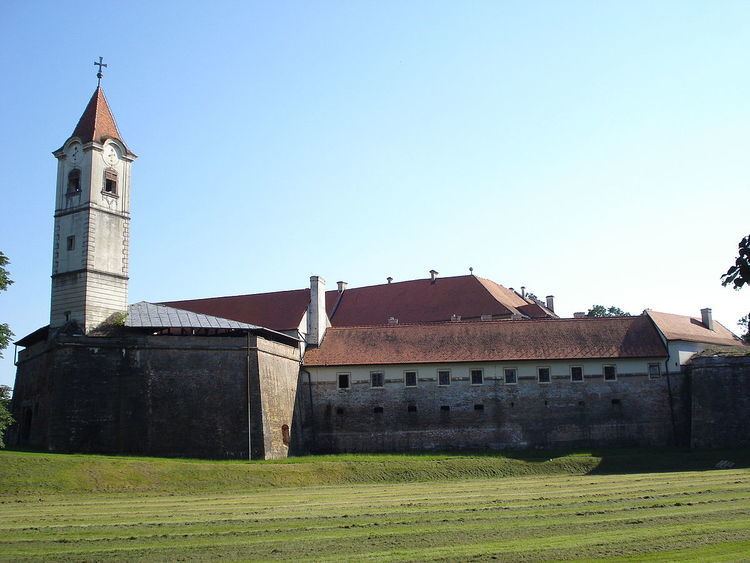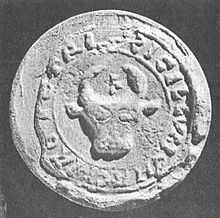Reign 1261 Father Buzad II Predecessor Ernye Akos Died after 1269 | Successor Ladislaus Kan Name Csak Hahot Noble family gens Hahot | |
 | ||
Csák (I) from the kindred Hahót (Hungarian: Hahót nembeli (I) Csák; died after 1269) was a Hungarian noble who held several secular positions during the reign of King Béla IV. Initially, he was a strong and influential supporter of the king's son, Duke Stephen, later returned to Béla's allegiance.
Contents
Biography
He was born into the Buzád branch of the gens (clan) Hahót as the son of Buzád II, who served as ban of Severin between 1226 and c. 1232. Csák had three brothers. His father was killed by the Mongols in Pest after the disastrous Battle of Mohi. Csák I had five sons, including Csák II, from an unidentified wife.

His name was first mentioned by a document in 1234. Albeit that charter proved to be a 14th-century forgery, its genealogical details are correct, which suggested he was born around 1215. He functioned as master of the horse from 1245 to 1247. Besides that he also served as ispán (comes) of Baranya County in 1245. Csák was the ispán of Sopron County between 1247 and 1254. According to a non-authentic charter he also held that office until 1260 or 1265 (depends on the uncertain date). As ispán, he owned the lands of Wulkaprodersdorf (Vulkapordány), Rohrbach (Fraknónádasd), Eggendorf, Hidegség and Homok, nearby the town of Sopron. Historian Melinda Tóth claimed Hidegség functioned as Csák's manorial seat, when held the office of ispán in Sopron County. Tóth also argued, the mural paintings (frescos) in the rotunda of Hidegség, which is an important artistic heritage from the 13th century in Hungary, were made under the financial support of Csák.
Csák was appointed master of the treasury by king Béla IV in 1248 and filled the office until 1259. In addition, he also functioned as ispán of Zala County between 1256 and 1259. In this capacity, he founded a Premonstratensian monastery in Rajk, dedicated to Blessed Virgin Mary. Alongside Ban Stephen Gutkeled, Palatine Roland Rátót and Benedict II, Archbishop of Esztergom, he participated in peace talks with the envoys of Ottokar II of Bohemia over the issue of Styria in April 1254 in Buda, representing Béla. When Stephen was made Duke of Styria in 1258, two neighboring counties—Vas and Zala—were transferred to the newly occupied province. Thus ispán Csák became Stephen's subject. He successfully defended the fort of Lockenhaus (Léka) against Bohemian troops. After the Battle of Kressenbrunn in July 1260, Béla IV was forced to renounce of Styria in favor of Ottokar II. Csák returned to Hungary and participated in the campaign against Bulgaria in 1261.
During that time there were emerging tensions between Béla IV and his son, Stephen, who returned to Transylvania and started to rule it for the second time as Duke of Transylvania after 20 August 1260. Csák gradually became an ardent admirer of Stephen, who dismissed voivode Ernye Ákos from that position and replaced him with Csák I Hahót. His proper title was "ban of Transylvania" (Latin: banus Transilvanus). Historian Gyula Kristó suspected deliberateness behind that unusual title (Ernye also bore that before Csák). Kristó argues Duke Stephen wanted to ensure to Transylvania a high degree of autonomy, like in Croatia and Slavonia. He also served as ispán of Szolnok County, which office was united with the voivodeship from that time. Before that Csák already held important offices in the royal court of Stephen: he was master of the treasury (1259) and master of the cupbearers (1260) for the duke. He also functioned as ispán of Zala County (Western Hungary) in 1260, which fact gives rise to uncertainty regarding his career, because around that time the hostility between father and son, who dominated the eastern part of the country turned into open war. Historian Attila Zsoldos considered Csák left the ducal court and swore allegiance to Béla, when a civil war lasting until 1266 broke out between father and son.
After the Battle of Isaszeg in March 1265, the king was forced to accept the authority of Stephen at Transylvania. On 23 March 1266, father and son confirmed the peace in the Convent of the Blessed Virgin on the 'Rabbits' Island. During that time Csák became a noble in the king's court again. He served as ispán of Zala (1265–1268) and Nyitra Counties (1269). His property in Sopron County was divided between his sons according to a business contract in 1274, implying that Csák's death occurred not long before.
Legacy
In order to protect his possessions at Muraköz (today: Međimurje, Croatia), he built a timber fortification, establishing the foundation of Csáktornya (lit. means "Csák's Tower", today: Čakovec, Croatia).
